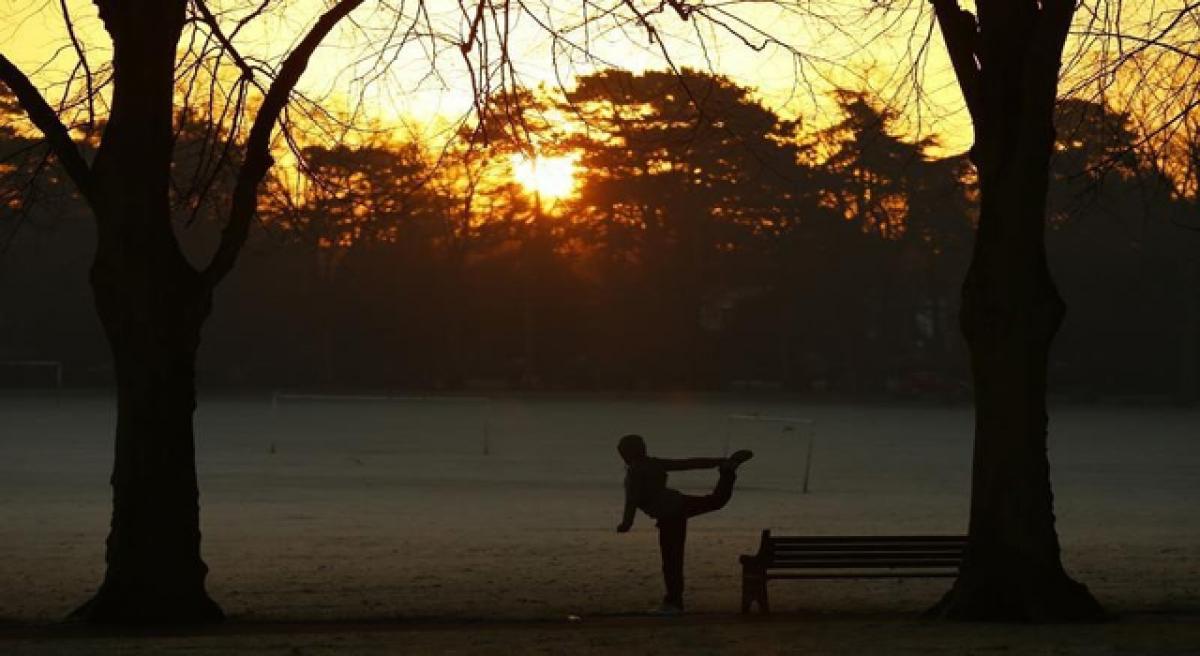Live
- Over 7,600 Syrians return from Turkiye in five days after Assad's downfall: minister
- Delhi BJP leaders stay overnight in 1,194 slum clusters
- Keerthy Suresh and Anthony Thattil Tie the Knot in a Christian Ceremony
- AAP, BJP making false promises to slum dwellers for votes: Delhi Congress
- 'Vere Level Office' Review: A Refreshing Take on Corporate Life with Humor and Heart
- Libya's oil company declares force majeure at key refinery following clashes
- Illegal Rohingyas: BJP seeks Assembly session to implement NRC in Delhi
- Philippines orders full evacuation amid possible volcanic re-eruption
- Government Prioritizes Welfare of the Poor, says Dola Sri Bala Veeranjaneyaswamy
- Two Russian oil tankers with 29 on board damaged due to bad weather
Just In

People should get about 30 minutes of exercise each day to counteract the potentially harmful effects of being inactive for too long, according to a new statement from a leading US heart group.
People should get about 30 minutes of exercise each day to counteract the potentially harmful effects of being inactive for too long, according to a new statement from a leading US heart group.
Research suggests inactivity may be linked to increased risk for diabetes, other blood sugar problems, heart disease, stroke and an earlier death, according to the statement from the American Heart Association.
"Be conscious of how much time you're spending sitting, and try to move more," said Dr. Deborah Rohm Young, chair of the AHA committee that authored the new statement.
"At least when you’re at home, try not to sit on the couch the whole time," said Young, who is also director of behavioral research at Kaiser Permanente Southern California in Pasadena.
Results from national health surveys in the US suggest that adults spend an average of six to eight hours a day inactive, or sedentary, the committee writes in the journal Circulation.
People over age 60 spend up to an average of 10 hours a day sedentary.
There could be a number of explanations for people being sedentary, the committee writes. Evidence suggests that people with mental health issues may spend a larger amount of time inactive, for example. Additionally, there may be a genetic component to people being sedentary.
There is also evidence that inactivity is a risk factor for a number of health conditions, and that taking breaks from being inactive may be protective of health.
Most of the existing studies of inactivity show a link between time spent being sedentary and an increased risk of diabetes, for instance. Several studies also show a link between sedentary time and heart disease.
One European study found that each hour of being inactive and watching TV increased a person's risk of fatal and nonfatal heart disease by about 6 percent.
Each extra inactive hour was also tied to an 8 percent increased risk of coronary heart disease, which includes plaque buildup in the arteries.
Other studies tie increasing sedentary time to earlier death, the committee writes.
The connection between poor health and being sedentary may be independent of the link connecting more physical activity with improved health, Young told Reuters Health.
So, people should likely break up prolonged periods of inactivity even if they meet the AHA's physical activity recommendations.
The quality of the current evidence prevented the committee from being able to say that people should stop being sedentary at particular intervals, the authors note.
The current AHA recommendation is that adults should get 150 minutes of moderate physical activity or 75 minutes of vigorous physical activity each week.
Getting people who are mainly inactive to move just a bit can likely lead to big gains in health, said Dr. John Bisognano, president of the American Society of Hypertension and a preventive cardiologist at the University of Rochester Medical Center in New York.
"Just encouraging people to do a little bit can make a big difference," said Bisognano, who was not involved with the new statement.
For example, he said, people could get up and walk around their building every hour.
"Motivating people to go from sedentary to physically active is a good focus," said Bisognano.
By: Andrew M. Seaman

© 2024 Hyderabad Media House Limited/The Hans India. All rights reserved. Powered by hocalwire.com







